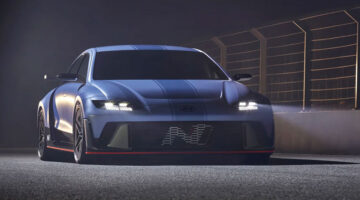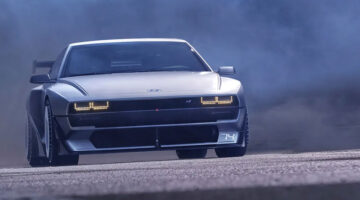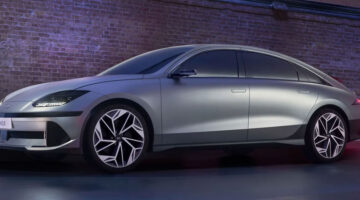Given the time constraints, Arun wraps his shoot up quickly and soon it’s my turn. The delicacy of the light means this time, unlike last, I will be working the shutter speed and ISO readings on the Canon myself, both of which control the amount of light let in through the lens, and the composition of the final image. It’s difficult to get the balance right: too much light will leave just an overexposed white splodge where there should be a car; too little and the subject disappears entirely into the shadows. Not only that, but in an effort to capture the glow of the sunbeams, I will also be trying to work out how much ‘warmth’ to put into the colour. Again, it’s delicate work: a reading too low and the light will look blue, or ‘too cool’; ramp up the reading and gold becomes a fiery yellow, or ‘too warm’. Child’s play to the professionals, but for me it’s entirely possible I’ll leave here without any usable pictures.
I’ve also decided to use multiple lenses. My first few shots are taken using the 24/70, which provides photographic range from close to mid distance. A few potential shots have caught my eye though which require extending the field of vision and a stronger zoom as a result. For this, I switch to the longer, heavier 70/200 lens that takes over where the 24/70 leaves off
In Hatta, I concentrated on capturing the desertscape and rocky outlands rather than the Duster. This time, I’ve chosen to shoot through objects in the immediate distance, blurring the lines to keep them ‘arty’ whilst always keeping the Hyundai as the Subject. If I can find a 60/40 balance between subject and landscape (whilst working with the changing light conditions), the effects will look pretty sharp.
Some 25 minutes later I’m feeling pretty knackered, having been squatting and/or lying there, climbing this and hiking to that for the sake of various angles. As a result my breathing is a lot heavier, and – completely unbeknownst to me – this is having an affect on the camera’s ability to focus, especially with the zoomier 70/200 lens. As I breathe out, the camera moves forward, the depth of field changing minutely as it does, and focus suddenly switches to a tree trunk or blade of grass in the background. Unable to see this through the camera’s viewfinder, I don’t notice that the Hyundai is actually out of focus in some of my more ambitious shots. Also, in my agitation to get pictures taken before the sun disappears, I realise too late that I’ve not been concentrating on the frames and or subject/landscape balance, preferring instead to get something on the memory card ‘just in case’. It’s a tough lesson, but a rudimentary one.
Once again though, the day has been an insight. Even under cooler conditions, the effort required – both mental and physical – for a photoshoot is immense, as my soil, grass and sweat-encrusted shirt demonstrates. My understanding of the 70/200 lens is improving too, and with practice I feel could really start making a difference. Perhaps most critically though, I’ve now taken my first tentative steps away from automatic settings and am learning how best to manipulate natural light through the camera. Lessons are swirling but I feel significant progress has been made so far. Give or take a ruined shirt along the way.
| Hyundai | Veloster | |
|---|---|---|
| Engine: | Inline 4-cyl / 1591cc | |
| Power: | 128bhp @ 6300rpm | |
| Torque: | 116lb ft @ 4850rpm | |
| Transmission: | Six-speed automatic | |
| Front suspension: | Fully independent subframe-mounted MacPherson struts / coil springs / hydraulic twin-tube gas-filled shock absorbers / 24mm diameter anti-roll stabiliser bar | |
| Rear suspension: | Coupled torsion bean axle / hydraulic mono-tube gas-filled shock absorbers | |
| Brakes: | 280mm x 23mm ventilated discs (front) / 262mm x 10mm solid discs (rear) | |
| Wheels: | 18-inch alloy front and rear | |
| Tyres: | 215/40 R18 front and rear | |
| Weight (dry) | 1231kg | |
| 0-100kph: | 10.3sec | |
| Top speed: | 200kph |



